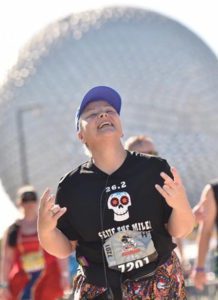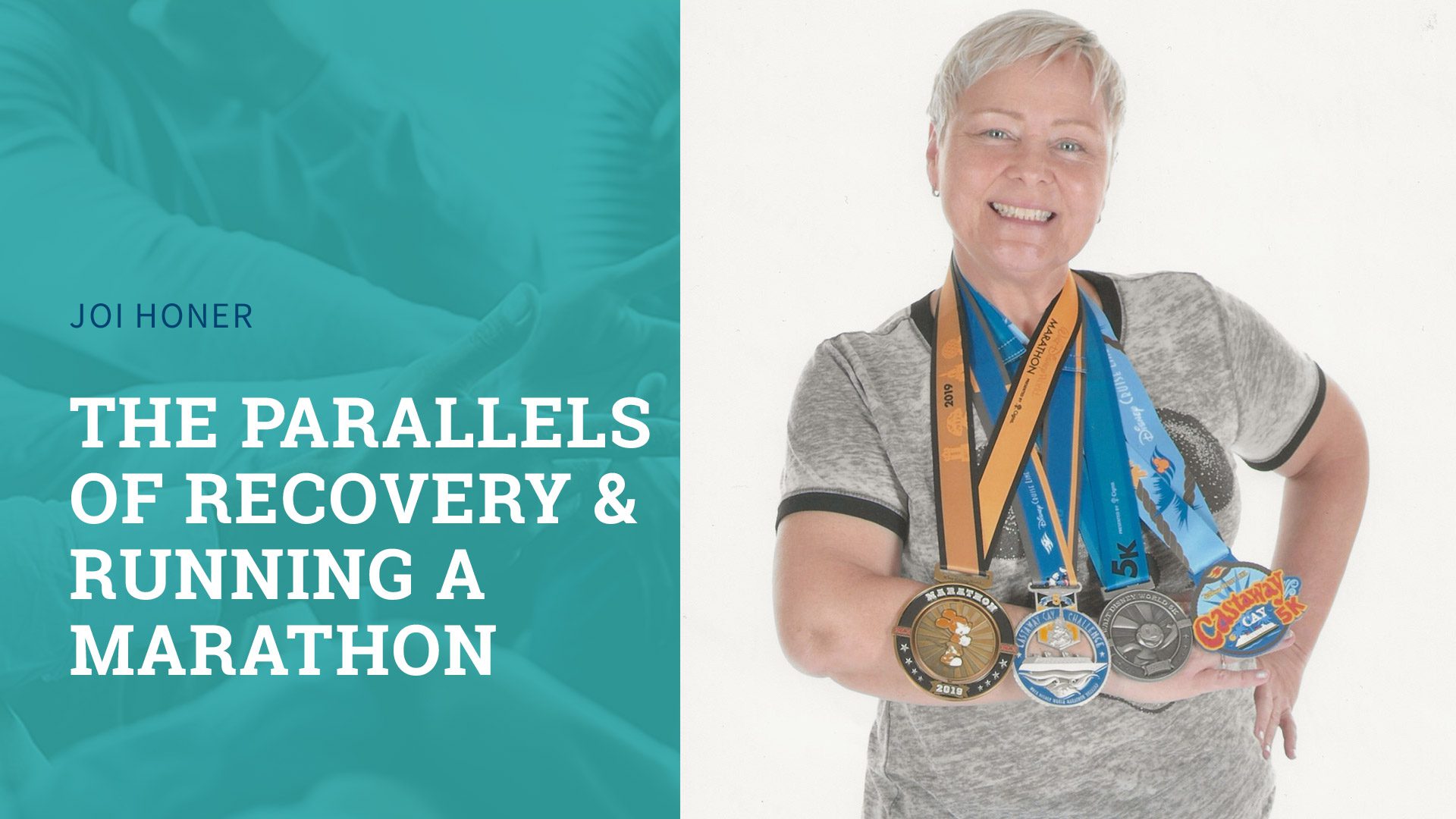By Joi Honer, National Alumni Director, Pinnacle Treatment Centers
 In January, I successfully completed a marathon. This extra curvy 54-year-old woman with not the best knees, no prior running history, no real passion for running, and a whole lot of doubt that I could finish, finished. My submitted race time was so slow that I placed in the last starting corral and closest to the “sweepers.” (A sweeper’s job is to take people off the course if they become too slow.) A final nod to impossibility? My best friend and training partner had to drop out at mile 7 because of an injury. Despite all of the above, I completed the entire 26.2 miles. What may have seemed impossible became possible.
In January, I successfully completed a marathon. This extra curvy 54-year-old woman with not the best knees, no prior running history, no real passion for running, and a whole lot of doubt that I could finish, finished. My submitted race time was so slow that I placed in the last starting corral and closest to the “sweepers.” (A sweeper’s job is to take people off the course if they become too slow.) A final nod to impossibility? My best friend and training partner had to drop out at mile 7 because of an injury. Despite all of the above, I completed the entire 26.2 miles. What may have seemed impossible became possible.
As a person in long-term recovery from a substance use disorder, I have personally experienced the applicable value of the recovery program phrase: “Practice these principles in all our affairs.” After completing the marathon, I recognized that much of what carried me through to the end were lessons learned in my recovery process. These timeless lessons are applicable to many of life’s challenges. Here are a few that stood out:
- Ambivalence and doubt is normal in a challenging and unfamiliar situation. – I was not sure I wanted it “enough” and definitely doubted my own ability to finish. What made the impossible possible was following through with the “plan.” Just like in recovery, my feelings were not facts. By allowing myself to feel them, sharing them with others and following the plan anyway, I was able to do what I thought at one time might be impossible. Ambivalence in early recovery is normal; it is the actions you take that will move you through those doubting times.
- The value of simply following direction – I had a plan, one that had worked for thousands before me. The “Galloway method” is a proven race method and a training plan that led me up to the event. However, at the start of the race, my first instinct was to run as fast and far as I could, but that was not THE plan. Intervals, that was the plan I practiced. So I stuck to it. Let me say at mile 24 I was grateful I did. I needed to pace myself to finish. Sometimes our beliefs are patterns of old behaviors that do not serve us anymore. We need to ask and listen to those who have gone before us for direction, and follow it.
- Repetition supports success –Six months of a running/walking schedule made completing the marathon possible. Similarly, in recovery, it was the daily action that turned into long-term success. I did not focus on a 6-month plan, I focused on running each day, day by day. And I will note, I did not follow the plan perfectly, but I didn’t use that as a reason to give up. A week or two later I was back at it! In our recovery journey we all can get off track, but our defects do not have to define us as we are human beings with a disease. We can get up the next day and do something different. Step onto that treadmill again. Make small achievable daily goals and be present within them.
- Where expectations and reality meet – The way I assumed I’d experience the race and how it felt in reality were two very different things. It was ugly, sweaty, hot, annoying and just plain ridiculously difficult! In early recovery, I had this vision of recovery perfection. A utopia full of always being “happy, joyous and free.” What I found instead was life. Crazy, funny, sad, annoying, challenging, hard and good all at the same time. The only things I had control over were my thoughts and actions. The impossible became this is what I can do at this very moment to finish. That is what I did. They say that finishing a marathon is mental not physical. Often, it is what is going on between our ears in recovery that we need to address, not the external forces that we cannot control.
- Look for the helpers – I could not have finished alone. Even though I lost my running partner, my connection with other runners got me to the end. I looked for people to emulate and found the “pacing groups” and matched their cadence. I even talked to some runners and encouraged others along the way. “A power greater than ourselves.” In early recovery, I looked for those people whose pace (recovery) I wanted to emulate. I followed them. Even now, I have a tribe. In fact, I have a few tribes. Bound by similar passions, we hold each other up into the light of possibility. It makes us all better human beings.
- Appreciating the moment – Finally, there were moments at the most challenging times in which I became conscious that I was achieving something that for me, was miraculous. This provided me with an energy source that I could only attribute to gratitude. Gratitude for the multiple gifts I was given to make it this far. My health, my legs, my friends, and the list goes on. Recovery is miraculous. Diagnosed with a deadly disease, we have stepped up today to do whatever we need to in order to recover. We can and should observe daily, the beauty of this moment. Gratitude brings magic to life.
So that is my running journey. I originally said that this one was it, once and done! Nevertheless, there is always next year. Hmmmm.
